2020 Dodge Challenger R/T Scat Pack Widebody Review: The Simplicity Of A Hammer

FAST FACTS
| Engine: | 6.4L V8 |
| Output: | 485 hp, 475 lb-ft |
| Transmission: | 6MT, 8AT |
| US fuel economy (MPG): | 14/23/18 |
| CAN fuel economy (L/100KM): | 15.8/9.6/13.01 |
| Starting Price (USD): | $47,490 (inc. dest.) |
| As-Tested Price (USD): | $56,155 (est, inc. dest.) |
| Starting Price (CAD): | $62,490 (inc. dest.) |
| As-Tested Price (CAD): | $70,170 (inc. dest.) |
As a muscle car, it stands in the class of one.
A curious tool the hammer is. It’s so primitive yet so versatile and useful. You can use it for a variety of functions like hammering nails, breaking planks, and even as a battle weapon. Thor uses one to control lightning and fly. And yet, it’s just a metal blob at the end of a long stick, simple. Today, cars, especially the sporty breed have become more complicated than the inner workings of a Patek Philippe wristwatch. The muscle cars especially, now qualify as American sports cars.
Get a Quote on a New Dodge ChallengerIn that respect, the Dodge Challenger stands as an outlier and the Scat Pack Widebody even more so. It still sticks to its primitive roots of a big powerful V8, a massive body dripping with road presence and straight line speed. And it just wants to have fun.
Attention Seeker
Personally, I think this is the best looking Challenger ever made. It looks mean and aggressive but in a friendly way. The gaping grille and the massive front lip give it a purposeful look. Its 3.5-inch flared wheel arches make it look hunkered down and ready to pounce while the Super Bee logo shouts its heritage to all who pass it by. The cabin is so far back it seems to be sitting in another state. Couple that with the V8 thunder and everyone eyeballs the car wherever it goes. It’s like a pure-bred German Shepherd, it will always draw a certain amount of fearful respect and admiration from others, but to you, it is your cute little puppy, with a ferocious bite of course.
Matters of Size
It’s huge. It’s so big that it ought to have its own gravitational field. It certainly has enough metal in it. It is uncompromising and unapologetic about its size and doesn’t try to mask it in any way. If anything, the flared arches add an extra 3.5 inches to the width and make it look even bigger. And that is great. For comparison’s sake, at 197.9 inches (5,026 mm) long it is almost 10 inches (254 mm) longer than the Mustang. It is also almost five inches wider and sports a wheelbase 9.1 inches (231 mm) longer compared to the ‘Stang. You get the idea. The cabin almost a hatch-length behind the front bumper and you’re never really sure where the front ends from the driver’s seat. Speaking of, it feels like you’re driving perched on in a La-Z-Boy armchair.
Sitting inside you don’t feel like you’re in something that can be taken to the drag strip. Everything seems laid back and relaxed and the SRT wizardry remains hidden behind a menu on the center screen. While the ‘base’ Widebody may seem spartan in terms of material used, our tester came with the carbon-suede package ($1,595), which, though pricey is necessary. Though it adds a liberal dose of carbon-fiber to the cabin, it makes the cabin feel richer rather than sportier which is a good thing.
SEE ALSO: 2021 Dodge Durango SRT Hellcat Review: First DriveThe front seats though large and roomy are a bit awkward. Well bolstered they may be, but the lumbar is at a strange angle. As a result, the headrest is quite far away from the thing it is supposed to rest. As a result, you get a firm smack on the head every time you bury the throttle. There is a rear bench and it can accommodate a child seat with the child in it. You can even stuff a couple of adults in the back the same way you can carry your weekend luggage in your laptop bag. If you so desire, you can even rumble into your local Walmart for there is ample space in the trunk for groceries and some knick-knacks.
Also, if you ignore the massive UConnect infotainment system, which is fantastic to use by the way. You’d be forgiven for thinking that you’re in something from the heyday of American Muscle. The instrument cluster though equipped with an MID digital screen doesn’t muddle the aesthetic of the retro twin gauge setup. A barely visible bright red needle housed in the central hub of the gauges and the closely bunched up numbers on the speedo look straight out of the aforementioned seventies. The only thing more retro would be a physical key turn on the ignition but there is no such pleasure.
Rumble, Rumble, Rumble
Instead, you get a starter button for the massive 6.4-liter V8 that stirs up a racket (the great kind) every time it wakes from its slumber. The push-rod powerplant gurgles and pops at idle. Standing at the lights you can’t help but feel like Vin Diesel sometimes. An image that is quite hard to shake. Another thing that is quite hard to get over is the position of the gear lever. Even in neutral it feels like it’s in first gear and you do get used to it eventually but even then you do give it a little shake now and then just to be sure it’s in neutral. And another thing you can’t get over is the foot-operated parking brake. It existed when dinosaurs roamed the streets and it is still in existence today in the Challenger.
There’s one more thing–I promise this is the last–it’s unbelievable how good that naturally aspirated V8 sounds. It makes 485 hp and 475 lb-ft of max torque. I honestly wouldn’t care if it only made 200 hp, I would redline it all day just to listen to that V8 growl. But I’m glad it makes that amount of power for when you floor it, you experience the full fury of the push-rod V8 as you’re slammed into the seatback. The acceleration is sudden and violent.
One prod of the throttle and the big, heavy, muscle-bound two-ton hunk of metal lunges towards the horizon. I can only imagine how the acceleration on the Hellcat would be. The violent acceleration carries on to the second gear and by the time you run out of the short rev range of just 6,500rpm, you’d be nudging 70mph. The eagerness tapers off into third gear. Progress, when prodded is still quick but nowhere as immediate as one gear down.
I think I’ve finally figured out why the Challenger is called a muscle car. It’s possibly because you need some serious muscle to drive it. The steering is heavy, the gear lever for the six-speed transmission gearbox seems to be from the industrial revolution–I could feel my chest hair grow every time I rowed a gear–and the clutch gives absolutely no quarter. Not only is it heavy but ride it even slightly and a peculiar yet unmistakable smell fills the cabin almost immediately. A long trip around town is a gym workout in itself. But you love every minute of it because all through the way, you find yourself, mostly against your better judgment, launching from the lights to feel that glorious torque and the guttural growl from the V8. It’s that addictive. And when you do reach home, you turn right back around and do it all over again.
Bruiser or Cruiser?
Usually, widebody refers to a car that has been widened for a squarer footprint for increased grip and mid-corner stability. A perception that is reaffirmed if the car in question comes with adaptive suspension. The Scat Pack is not that car. Despite the widebody moniker and adaptive suspension, it is anything but well mannered in the corners. Even with the suspension in track mode, the body roll is quite prominent. But then it would be because the widebody weighs 4,386 lbs (1,989 kg). The steering is heavy, large, and almost truck-like, the seats of the pants feel is minimal as you sight higher off the ground than you would in a sports car and everything apart from the fantastic Brembo brakes seems to respond after taking a contemplative pause.
I’m sure there are ways to push the Challenger in the corners and extract lap times out of it. But me, being a muscle car novice could barely figure out where the car ended in either direction as I constantly encroached the solid yellow lines. It was anxiety-inducing. But when the corners ran out, the anxiety disappeared and the adrenaline-inducing acceleration returned. In my experience, the Challenger doesn’t handle in the corners and that’s okay.
Leave the suspension in street, the traction control on, and watch the Challenger transform into the perfect cruiser. The primary reason I say that, is because it’s comfortable. Really comfortable. Despite the massive Devil’s Rim wheels and a square footprint of 305 mm on each corner, the ride is pliant and absorbent. And it’s not pliant for a two-door 485 hp coupe. It’s pliant, period. Though the peak torque sits at 4,100 rpm, there is enough available well below that to comfortably cruise at 30mph, in sixth gear. And when you mash the throttle, the acceleration gets progressively quicker as the revs build. That means, out on the highway, you don’t need to row through the hammer-esque gear lever if you don’t want to and yet, a quick overtake is only a movement of the right foot away.
But it is a 485 hp muscle car so it’s bound to have some quirks of character. The massive 305 section tires though phenomenal in the dry turn a wobbly mess in the damp and in the wet, the traction control light will not stop flashing. And its tail will want a word with you at the slightest provocation. They also tramline better than actual trams so you need to focus, all the time. It’s good, it keeps you alert. Some might even call it a safety feature.
Verdict: 2020 Dodge Challenger R/T Scat Pack Widebody
Adamantly primitive, massive and unapologetically loud, the Challenger is likely the vehicular equivalent of the adage; “growing up is a choice.” It isn’t the most practical, nor frugal, it is too big for the roads even in America and if like me you’re a muscle car novice, it’s outright scary in the corners and terrifying in the wet. Plus, starting at $47,490 ($62,490 CAD) or $56,155 ($70,170) for the one we have here, it’s not exactly affordable either. In Canada, you need to pay $1,000 extra for the manual gearbox. But it’s honest and in a world that hides behind Instagram filters, its honesty is endearing.
If you want a true blue V8 muscle car, the Challenger is really the only choice because while the others are busy trying to be multi-purpose tools, with a thousand attachments, the Challenger Scat Pack Widebody is as simple and yet as useful as a hammer.
Become an AutoGuide insider. Get the latest from the automotive world first by subscribing to our newsletter here
LOVE IT
- Incredible V8 sound
- Kick-in-the-head acceleration
- Comfortable cruiser
LEAVE IT
- Very thirsty
- Gets pricey
- Can be terrifying in the corners (for muscle car novices) especially when wet

More by Kshitij Sharma



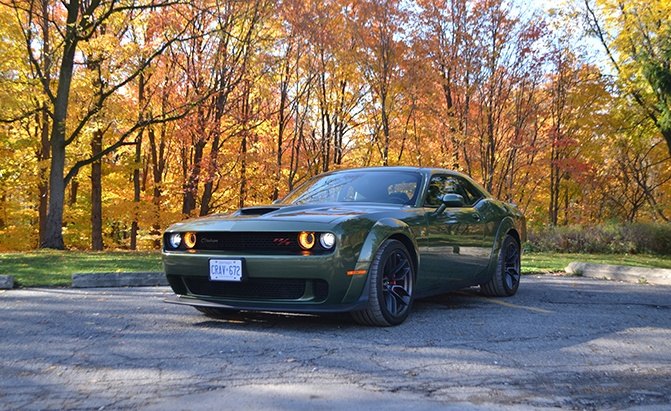
























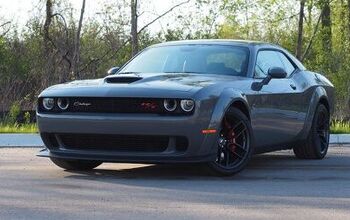



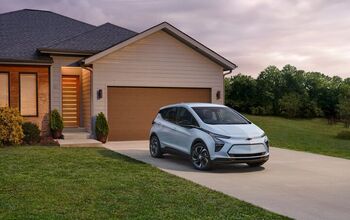




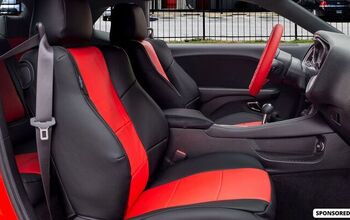



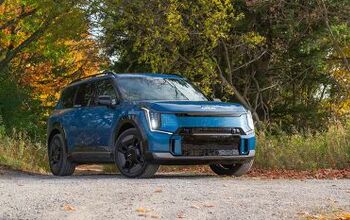
Comments
Join the conversation